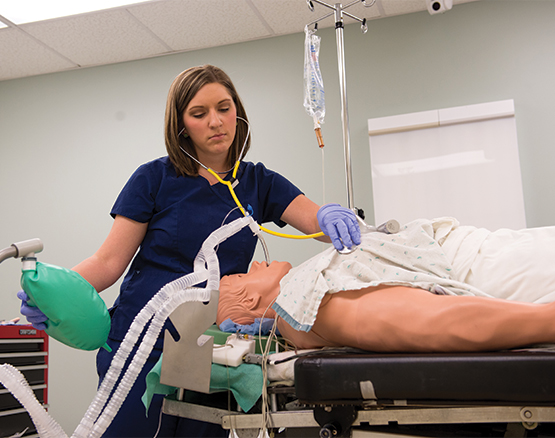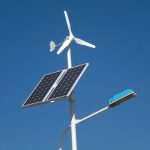Product, technology, application, end user, and geography have all been used to segment the global nerve monitoring systems market. The nerve stimulation electrodes and probes segment held the greatest proportion of the worldwide nerve monitoring system market in 2017, according to product. The growing awareness of healthcare professionals about the clinical benefits of nerve monitoring, the increasing number of complex and critical surgeries performed around the world, and ongoing technological advancements in the field of nerve stimulation and monitoring are all contributing to this large market share.
The global market for nerve monitoring systems is expected to reach USD 1.45 billion by 2022, with a CAGR of 4.9 percent over the forecast period. The increased availability of medical reimbursement for nerve monitoring treatments, as well as the rising demand for surgical intervention among trauma cases around the world, are all driving the rise of the nerve monitoring systems market.

North America had the greatest market share in 2016 and is expected to grow at the fastest rate during the projected period. The considerable acceptance of nerve monitoring in North America is related to the expanding number of clinical trials that have proven its therapeutic value in surgeries, as well as the availability of medical reimbursement in the US. Furthermore, the market’s growth can be ascribed to the high patient population for target diseases, the region’s strong presence of device makers, and the availability of major R&D investments to support nerve monitoring product development.
In 2016, Medtronic (Ireland) had the market leadership position. Over the last three years, the company has concentrated on product innovation and boosted its R&D spending in order to continue to develop in the sector. Other key players in the market include NuVasive (US), Nihon Kohden (Japan), Bovie Medical (US), Natus Medical (US), Checkpoint Surgical (US), Magstim (UK), Inomed (Germany), Erbe Elektromedizin (Germany), Dr. Langer Medical (Germany), EMS Handels (Austria), Neurovision Medical (US), and Halyard Health (Georgia).
Audience You’re After
Manufacturers of nerve monitoring devices
Suppliers and distributors of products are being watched with bated breath.
Manufacturers under contract
Hospitals, surgical centres, and ambulatory surgical centres (ASCs) are examples of healthcare service providers.
Academic institutes and research laboratories
Organizations that conduct clinical research (CROs)
Regulatory agencies of the government
Non-governmental organisations (NGOs) and independent associations
Regulatory bodies at the national and international levels
Surgical Centers and Hospitals
Nerve monitoring devices are becoming more widely used as the number of complex diagnostic and surgical operations performed in hospitals grows, as does the number of hospitals and surgical centres in developing countries. The increasing number of nerve monitoring procedures conducted in hospitals and surgical centres is due to the changing payment picture for nerve monitoring procedures in industrialised countries.
Ambulatory Surgery Centers (ASCs) are surgical facilities that are open to the public.
Ambulatory surgical centres (ASCs) are medical and surgical institutions that provide certain surgical and medical procedures outside of the hospital setting. The increasing number of reimbursed medical operations under the ASC payment system in the United States, as well as the expanding number of minimally invasive surgeries performed by ASCs, are driving positive demand growth for nerve monitoring systems in ASCs.
Important Questions
What are the key market players’ business growth methods for maintaining their market position throughout key geographies?
What is the current state of development for significant nerve monitoring systems among Medtech companies and academia?
A important trend in clinical management is the increase in the number of trauma-based surgical procedures. What effect will trauma-based surgical techniques have on the market for nerve monitoring systems throughout the forecast period?
What other technologies/therapies are being employed for nerve monitoring around the world right now? What a threat they are to key companies in the nerve monitoring systems market.
The global nerve monitoring system market is expected to grow at a CAGR of 4.9 percent to USD 1.45 billion by 2022, up from USD 1.14 billion in 2017. During the research period, factors such as an increase in the target patient population, clinical benefits associated with nerve monitoring procedures, and the increasing usage of nerve monitoring in trauma cases are likely to boost demand for nerve monitoring products.
The nerve monitoring system market is divided into four categories in this report: product, technology, application, and end user.
The market is divided into three categories based on product: nerve stimulation electrodes and probes, nerve monitors, and accessories. The nerve stimulation electrodes and probes category is predicted to have the biggest market share in 2017. The growing awareness of the clinical benefits of nerve monitoring, the rising number of complex and critical surgeries around the world, the rise in spinal cord injuries around the world, and ongoing technological advancements in the field of nerve stimulation and monitoring are all contributing to this segment’s size.
The market is divided into electromyography, electroencephalography, electrocorticography, and evoked potential based on technology. During the forecast period, the electromyography (EMG) segment is predicted to be the fastest-growing segment of the market. Electromyography is a technique for analysing, evaluating, and recording the electrical activity of skeletal muscles and their associated motor nerve cells. During the forecast period, the electromyography segment is predicted to rise due to the increasing availability of reimbursements for EMG-assisted surgical operations in developed nations and the widespread use of EMG nerve monitoring for intraoperative applications.
Medical Devices & Equipment
The NS-SIOM-1E is a touch-screen, user-friendly intraoperative monitoring system with 4 or 8 channels that can be used for a variety of surgical procedures.

Through monitoring of triggered EMG activities in numerous cranial and peripheral nerves, this device helps limit the risk of nerve damage during surgery and discover nerve functions before the completion of operation. Facial Nerve, Thyroid, Spinal, ENT, and other general operations can all benefit from NS-SIOM-1E.
NIM nerve monitoring systems allow surgeons to identify, confirm, and monitor motor nerve function during surgery, reducing the risk of nerve damage.
ENT and general surgeries are among the procedures available.
The NIM-Response® 3.0 and NIM-Neuro® 3.0 offer superior nerve monitoring technology with an easy-to-use interface, based on more than 20 years of expertise. EMG activity from several muscles is monitored using NIM® devices. The NIM system may give auditory and visual warnings if nerve function changes, reducing the risk of nerve damage.
Our NIM 3.0 systems come with a user-friendly touchscreen, three simple user modes, and pre-programmed or custom settings. They also provide:
During bipolar cautery, the patient is monitored.
Software for detecting artefacts
Visao® Drill combination with Stim Bur Guard
Continuous real-time monitoring with the APS® Electrode
Control from the operating room
Multiple USB ports make documentation a breeze.
Read also:Stretch Hood Films Market



